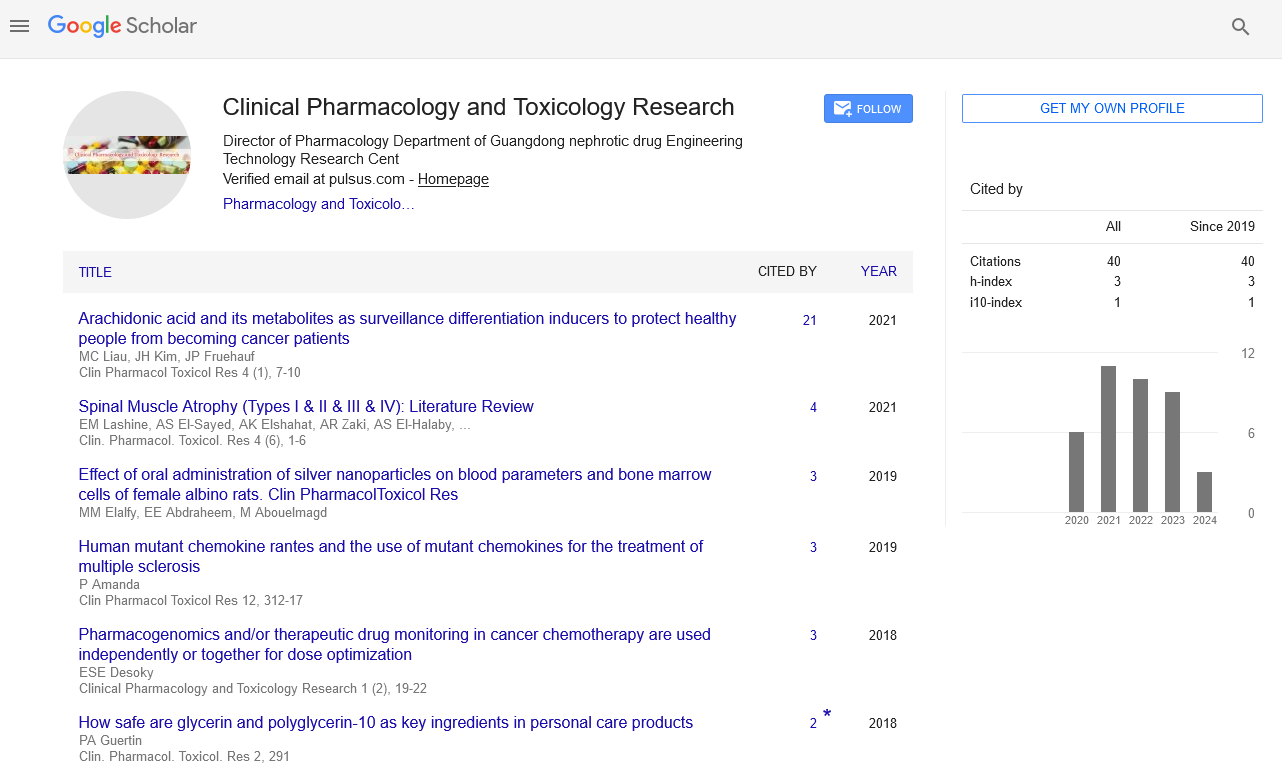An overview of pharmacology of hemoglobin therapeutics
Received: 18-Feb-2022, Manuscript No. PULCPTR-22-3955; Editor assigned: 21-Feb-2022, Pre QC No. PULCPTR-22-3955 (PQ); Reviewed: 07-Mar-2022 QC No. PULCPTR-22-3955; Revised: 11-Mar-2022, Manuscript No. PULCPTR-22-3955 (R); Published: 18-Mar-2022
Citation: Johannes Bakker. An overview of pharmacology of hemoglobin therapeutics. Clin Pharmacol Toxicol Res. 2022;5(1):1.
This open-access article is distributed under the terms of the Creative Commons Attribution Non-Commercial License (CC BY-NC) (http://creativecommons.org/licenses/by-nc/4.0/), which permits reuse, distribution and reproduction of the article, provided that the original work is properly cited and the reuse is restricted to noncommercial purposes. For commercial reuse, contact reprints@pulsus.com
Abstract
Blood is an important biologic fluid with many multiple properties and functions. One main and distinctive function of blood is to transport oxygen to tissues. After hemorrhage, the loss of blood leads to a hypovolemic state, which if serious can cause tissue hypoperfusion, and decreased tissue oxygenation may lead to total organ failure. Hemoglobinbased oxygen carders are being emerged as resuscitative agents for the treatment of hemorrhagic shock. Several hemoglobin therapeutic agents have passed phase I safety hurdles and are currently in phase lI and III of clinical trails.
Keywords
Adrenergic mechanisms, ETs mechanism, Hemoglobin
Introduction
The main aim of many research groups within academia, industry, and the military is to develop a safe and effective oxygen-carrying agent that could be lifesaving in hypovolemic conditions. Although these agents are not able to conduct all the functions of blood, they do offer numerous advantages over conventional blood transfusions. The most important advantage lies in the ability of these agents to be administered rapidly without blood typing and cross-matching. Being devoid of white cells and other blood components, these agents may prevent the injury associated with the release of cytotoxic products.
Hemoglobin therapeutics have been impressive in preclinical and clinical studies in several disease conditions such as hypovolemic shock, septic shock, myocardial infarction, burn, stroke, and sickle cell disease and during cardiopulmonary bypass, and they may accelerate wound healing.
Pharmacologic mechanism: Various studies have been performed to determine the mechanisms of action of the cardiovascular effects induced by modified hemoglobin. The predominant effect seen with most of the modified hemoglobin solutions is an increase in MAP. It is speculate that the scavenging of NO is the most important mechanism for the pharmacologic actions of these solutions. However, the scavenging of NO cannot fully describe the cardiovascular effects. There is growing realization of the involvement of adrenergic mechanisms, ETs, nitrovasodilators, and calcium channels in the cardiovascular responses of these agents.
Role of no and modified hemoglobin therapeutic mechanism: The actions of endogenous NO are mediated through cGMP. After serious hemorrhage there is a significant loss of vascular tone and a hyporeactivity of blood vessels to vasoconstrictors that may be deleterious to the survival of the animal. The loss of vascular tone and the hyporeactivity of blood vessels may be caused by an increase in NOS activity and a subsequent increase in NO and cGMP levels.
Modifications of hemoglobin to convert the no scavenging properties: A series of recombinant Hemoglobins with decrease rates of reaction with NO have been studied. However, there is a growing realization that the modification of NO reactivity can also lead to altered oxygen kinetics and oxygen affinity, which are ultimately important for oxygen delivery.
Pharmacologic properties of adrenergic mechanisms: The role of adrenergic mechanisms in the pressor action of hemoglobin solutions has not been extensively studied.
Pharmacologic properties of ET mechanism: Oxyhemoglobin has been found to increase the ET-1 concentration in cultured bovine pulmonary artery endothelial cells and augment ET production after platelet-mediated stimulation.
Conclusion
Hemoglobin therapeutics, if approved, it will produce using an oxygendelivering agent for the management of critical care patients, but several other innovative applications are also under investigation. Among all the applications for these agents is their use to restore oxygen delivery to prevent or reverse hypovolemia and subsequent organ failure as part of hemodilution in patients undergoing voluntary surgery during extracorporeal oxygenation in cardiopulmonary bypass to improve tissue perfusion in cardiogenic, septic, or postsurgical shock to reduce the degree of ischemia after myocardial infarction to increase blood rheology in sickle cell anemia and to improve the oxygenation of tumors, making them more sensitive to radiation or chemotherapy. Very less amount of studies have been carried out regarding the basic pharmacologic properties of each of the modified hemoglobin agents.





